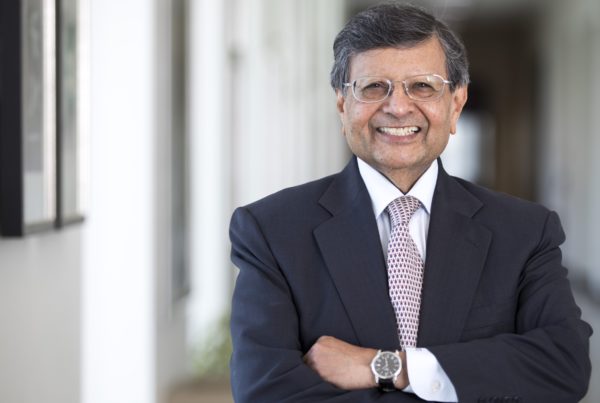Published: Apr 07, 2004 in Knowledge@Emory
While the growth in offshore business service imports is beginning to cause a stir in the United States, it’s leading to dramatic changes in the Indian economy and society. Professors at Emory University and its Goizueta Business School who know India well say that they have seen tremendous economic and social changes in this huge nation since the service boom began just a few years ago, and they predict even greater changes and challenges in the years ahead.
India today feels a bit like the U.S. during the dotcom boom, Goizueta’s India-watchers say, where a small class of young people are suddenly making much more money than most people had ever dreamed. Although the new industries don’t employ all that many people – most estimates say IT and business process outsourcing employs fewer than a million workers in this nation of over 1 billion – this sector’s success has had an enormous impact not only on the economy but on the country’s culture and self-confidence.
One key indication of the magnitude of the shift: India’s foreign exchange reserves have grown from almost nothing to about $100 billion in just two years – a huge number for a country whose gross domestic product is forecast to reach $650 billion in the coming year. “Things are changing very quickly, and the pace of it does surprise me,” says Joy Mazumdar, an Emory economist in the Department of Economics.
In the cities, the boom is changing the texture of daily life. “When I lived there, there were no such things as malls and now there’s a new one opening every month in the big cities. You can go in and get almost anything you get in the United States, which even 10 years ago wasn’t possible. Even five years ago in my hometown of Calcutta there wasn’t anything like this,” observes Sudipta Basu, a professor of accounting at Goizueta.
Another indication of change in the subcontinent’s zeitgeist: ten years ago, the top-rated shows were serials based on Hindu religious themes – the Hindu equivalent, Basu says, of Mel Gibson’s film about Jesus. These days, he notes, the big hit is the Indian equivalent of Who Wants to Be a Millionaire?
And all this may be only the beginning. In a November 2003 interview in an Indian business newspaper, the Business Standard, Y.V. Reddy, governor of the Reserve Bank of India, India’s counterpart to Alan Greenspan, said that the country is “on the threshold of a high growth trajectory.” His best guess: 8% growth over the next two to three years.
Western companies are drawn to India today as a way to cut costs in all kinds of business processes, from IT development to claims-processing, and from call centers to tax-return preparation. But Richard Metters, a professor of decision and information analysis, cautions that the cost savings is not as dramatic as one might expect in a country where the latest government figures peg average per capita income at 10,964 rupees – about $243.
“The wage comparison is misleading,” Metters says, because low wages create other expenditures Western companies typically don’t consider. “You can get a worker for a tenth of the wages in the U.S., that’s true, but somebody who makes $3000 a year can’t afford a car, so they can’t get to work. So you have to hire drivers to pick them up and bring them to work. And somebody who makes $3000 a year can’t go out to lunch, so you have to have a subsidized employee cafeteria that feeds them.” Also, Metters says, the weak infrastructure means that companies need to spend more on telephone lines and backup generators, and the country’s ongoing political tensions with Pakistan mean greater expenses on security than is typical for a Western company. Extensive training, such as accent neutralization classes and crash-courses in American geography, increase costs as well.
The upshot: a savings of only about 25%, he estimates. But the quality is often good, he says, as college graduates typically take the call center jobs, which are considered good and even prestigious posts. And 25% is a significant savings for companies that watch every penny.
It’s probably also just the beginning. After all, these college graduates can do much more than answer phones. In services, Goizueta professors say that India has tremendous numbers of skilled professionals. Consider accounting, for instance. India’s accounting schools produce about 50,000 new accountants every year, according to some reports. By comparison, the American Institute of Certified Public Accountants estimates the U.S. turns out about 35,000 new accountants. And not only are the numbers large, but the quality is good: Basu says that the exams Indian accountants take are tougher than the U.S. CPA exam.
The situation is similar in other professions. Indian nurses and doctors take jobs all over the world. India produces about 290,000 engineers every year, roughly the same as the number that graduate in both science and technology in the U.S. The largely Hindu country even exports Catholic priests, according to Jagdish Sheth, a professor of marketing at Goizueta.
Sheth, who maintains close ties to India and serves on the boards of several leading Indian companies, sees many areas in which there are huge opportunities for India’s skilled workers, particularly in science, pharmaceuticals, and agricultural science. In science, for instance, scientists are paid about a tenth of what they are paid in the U.S., says Sheth. This is more than double the differential between call center employees in India versus the U.S.
But most professors expect growing pains as the country develops. While most Indians now feel that the country as a whole is benefiting from the service boom, Mazumdar says the growth in income inequality could lead to social trouble down the line, as software developers receiving salaries approaching Western standards try to live side by side with people getting along on several hundred dollars a year. “In certain cities, especially in cities like Delhi and Bombay, it does create this big discrepancy between people,” cautions Mazumder. “It drives up real estate prices and things like that. It has not exploded, at least not yet.”
Sheth says that the numbers of women entering the back office outsourcing is also likely to create major social challenges in a country where educated women traditionally did not work outside the home. “Now they have become a significant part of the workforce, especially in call centers, which is creating enormous cultural challenge and change,” he says. His analogy: Japan in the late 40s, when the U.S. and Emperor Hirohito drove a complete change in women’s role in Japanese society.
For its neighbors, India’s growth may be leading to massive changes as well – some positive and some not. Nazrul Islam, an Emory economist originally from nearby Bangladesh, says that Bangladeshi IT firms look to India as a model, and are now even hiring Indians to train their programmers. “That’s the hopeful side,” he says.
However, Islam does see one worrisome trend: he fears India’s success may be going to its head. “For the small [neighboring countries] India was always perceived to be a sort of a big brother – not in a benevolent sense…and India’s economic success will probably accentuate that.” One example: the Indian government’s national river-linking project, a plan to divert many of the country’s eastern rivers to the drier western and southern parts of India. “And they’re going ahead with this project with total neglect of what will happen to Bangladesh, which is the lower riparian country and a smaller country,” he says.
Infrastructure remains a key problem, despite gains in recent years. As the prominent emerging markets investment guru Marc Faber told an Indian newspaper recently, “Infrastructure has improved from horrible to very bad.” Electricity, roads, and even such basics as the quality of paper money (the Reserve Bank of India recently began a campaign to replace notes that have been stapled together in bundles) remains a problem. Metters says that most development is concentrated in self-contained campuses, in which each company has its own security, back-up generators and telecommunications systems. The number of these “islands” is growing, he says.
You see this gleaming office tower housing all these people, and right outside of that gleaming office tower is garbage in the street and a dirt road and an ox pulling a cart,” observes Metters.
Mazumdar notes that the lack of infrastructure is probably one reason the service exports have grown more quickly than manufactured goods. For example, goods that might ship out of China in hours can take up to 18 days to leave India, he says. “But with service exports, things were very, very different because you did not have these transportation hurdles. All you had to do was send it along on a phone line or a satellite link.”
The growth of cities, which generally occurs as a country industrializes, could also create difficulties. Sheth says that he is now trying to encourage companies to keep workers from migrating to India’s gigantic, crowded cities. One positive aspect of the service boom is that it should be possible, through local governmental incentives, to locate call centers and other plants in smaller communities.
Wage inflation will be a challenge as the number of educated, English-speaking workers is absorbed, says Sheth. Negotiating a new role for women is also likely to be contentious, he warns.
Finding jobs for India’s billion plus people is another key challenge that the service boom has thus far not addressed. To employ its young and growing population, Sheth says that country needs to look outside its service-sector base and export more manufactured and agricultural goods. He says that there’s a lot of potential in these sectors. For instance: India has the largest dairy industry in the world, but doesn’t export any of its dairy products. However, things may be changing. Now, he says, a farmer’s cooperative he spoke to last year about the idea has just concluded a contract with Wal-Mart.
Mazumdar says he expects that the current neat division between India as a servicing hub and China as a manufacturing powerhouse will change. “If these had been fairly small countries, I would say, this specialization is going to continue in the future, but given that these countries are large, there’s enough of a variety of talent that they should actually be able to have a very diversified export portfolio.”





